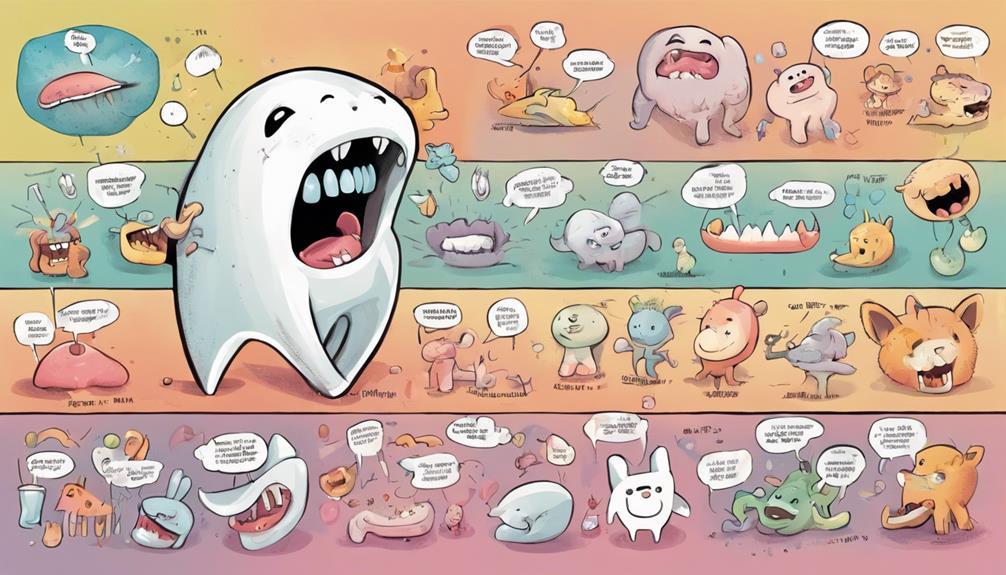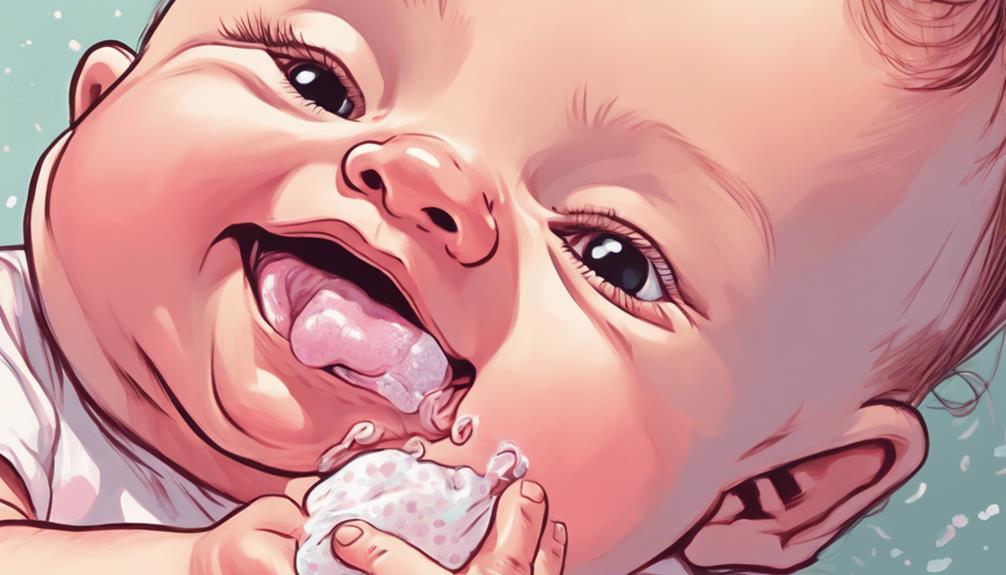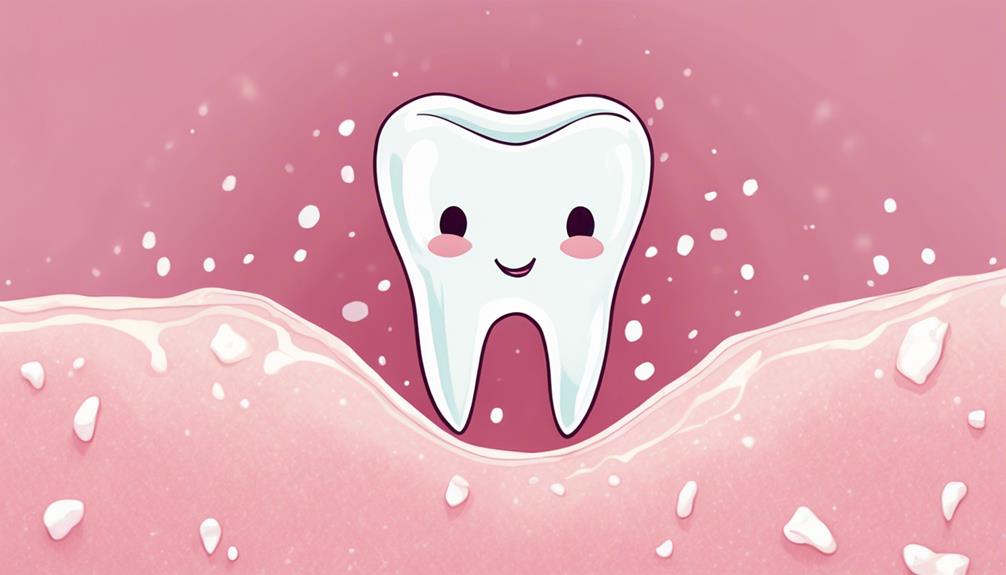Most babies start getting their teeth between 4 to 7 months. Typically, the lower central incisors emerge first around 6 to 12 months. You can expect the upper central incisors to follow between 6 to 8 months. Lateral incisors usually appear from 9 to 12 months, while first molars come in between 13 to 19 months. By age 3, your child should have a complete set of 20 primary teeth. It's important to know the signs and manage discomfort during this period. If you're curious about how to support your child's dental health, there's plenty more to discover.
Key Takeaways
- Most babies start teething between 4 to 7 months of age.
- Lower central incisors typically emerge first, around 6 to 12 months.
- Upper central incisors usually appear between 6 to 8 months.
- Lateral incisors erupt between 9 and 12 months, often around 9 to 13 months.
Teething Timeline Overview
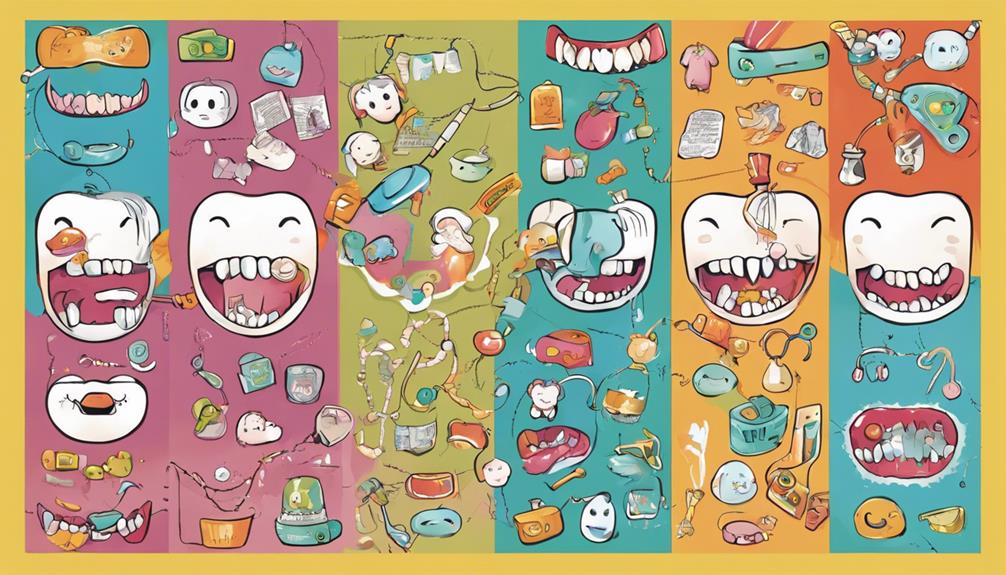
Most babies start teething between 4 to 7 months, usually beginning with their lower central incisors. This marks the start of the teething timeline, where you'll witness your baby's first teeth emerging.
Typically, the central incisors come in first, around 6 to 12 months of age. After that, the lateral incisors appear between 9 and 13 months.
As your teething baby continues to grow, expect the first molars to erupt next, usually between 13 and 19 months. Following the molars, canines will show up around 16 to 22 months, and finally, the second molars will emerge from 25 to 33 months.
By the time your little one reaches three years old, they should have a complete set of 20 primary teeth.
It's important to remember that individual teething timelines can vary considerably. Some babies may get their first teeth earlier or later than others, so don't worry if your baby's schedule doesn't match the typical patterns.
Understanding this teething timeline will help you prepare for each stage of your baby's dental development.
Signs of Teething

As your baby starts teething, you'll likely notice several signs that indicate discomfort, such as increased drooling and irritability. Understanding these signs can help you support your little one during this phase.
Here are three common signs of teething:
- Increased Drooling: You might find your baby's clothes soaked from constant drooling, which is a typical sign of teething.
- Swollen and Tender Gums: Pay attention to your baby's gums; they may appear red and swollen, especially around the lower central incisors.
- Irritability: Your baby may seem fussier than usual, struggling to find comfort.
While teething can be uncomfortable, it's crucial to recognize that teething is painless for many infants. Some babies might even display a slight temperature elevation (less than 38°C), but anything higher may signal other health issues.
Keep an eye out for changes like one flushed cheek or disrupted sleep patterns. By recognizing these signs of discomfort, you can help ease your baby's experience as their teeth begin to emerge.
Order of Tooth Eruption
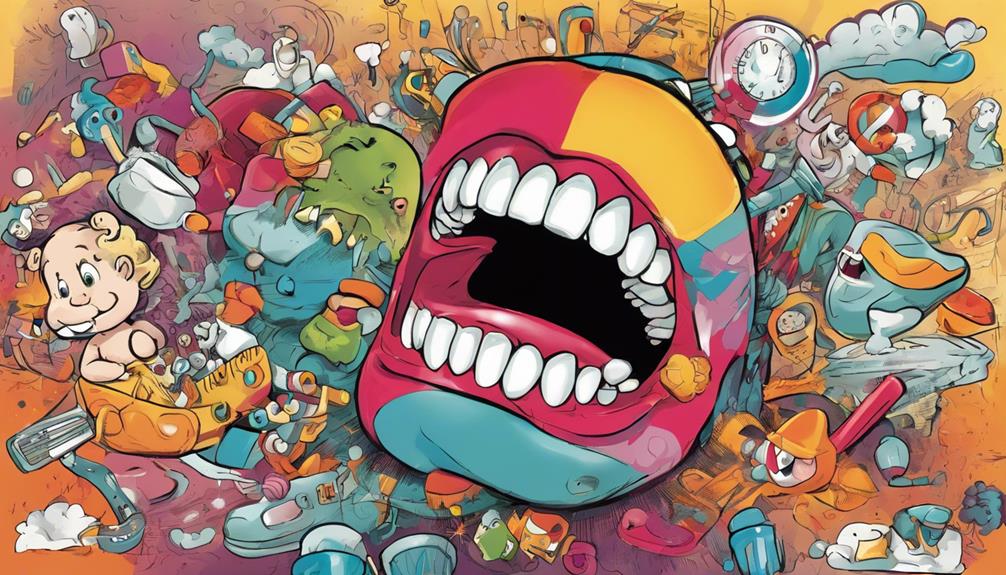
Tooth eruption follows a predictable order, starting with your baby's lower central incisors around 5 to 7 months of age. After that, you can expect the upper central incisors to come in between 6 to 8 months. Understanding this timeline helps you anticipate when your little one will begin their teething journey.
Here's a handy overview of the order of tooth eruption:
| Tooth Type | Eruption Age (Months) | Total Primary Teeth |
|---|---|---|
| Lower Central Incisors | 5 to 7 | 20 |
| Upper Central Incisors | 6 to 8 | |
| Lateral Incisors | 9 to 12 | |
| First Molars | 13 to 19 | |
| Canines | 16 to 22 | |
| Second Molars | 25 to 33 |
Teething Discomfort Management

When your baby starts teething, managing their discomfort is key to keeping them happy.
You can try soothing techniques like rubbing their gums or using chilled teething rings, while ensuring the products you choose are safe.
Let's explore some effective methods and the best teething products to help ease their pain.
Soothing Techniques for Discomfort
Gently rubbing your baby's gums with a clean finger can quickly soothe their teething discomfort. This simple action stimulates the area and helps ease the pressure from erupting teeth.
Additionally, consider these effective soothing techniques:
- Chilled Teething Rings: Offer chilled teething rings or a frozen washcloth to provide relief to sore gums. Just make sure to avoid liquid-filled options to prevent leaks.
- Solid Rubber Teething Toys: Give your baby solid rubber teethers to safely chew on, relieving pressure on their gums. Stay away from small or breakable objects to avoid choking hazards.
- Medication: If your baby's discomfort is intense and persistent, consult your healthcare provider. They might recommend appropriate doses of acetaminophen or ibuprofen for pain relief.
While a slight increase in temperature (below 100.4°F or 38°C) may occur during teething, keep an eye out for high fever or other severe symptoms, as these may require medical attention.
Safe Teething Products
Finding safe teething products is vital for soothing your baby's discomfort during this challenging time. You want to guarantee that the teething products you choose provide effective relief without introducing any risks. Solid rubber teethers and chilled teething rings are excellent options, as they can offer soothing relief without the dangers associated with liquid-filled varieties.
Be cautious, though; avoid teething necklaces and bracelets because they pose significant choking hazards and strangulation risks for infants. Cold items like frozen washcloths can also help numb sore gums, but always supervise your baby to prevent choking.
When it comes to teething biscuits, monitor them closely to guarantee they're age-appropriate and safe for your child's chewing ability. As a parent, it's vital to stay informed about which products are truly safe.
Always consider consulting a pediatrician before using any pain relief medications or introducing new teething products. They can guide you on the best options tailored to your baby's needs, guaranteeing you manage teething discomfort safely and effectively.
Prioritizing safety will help ease your worries while providing comfort to your little one.
Importance of Early Dental Care
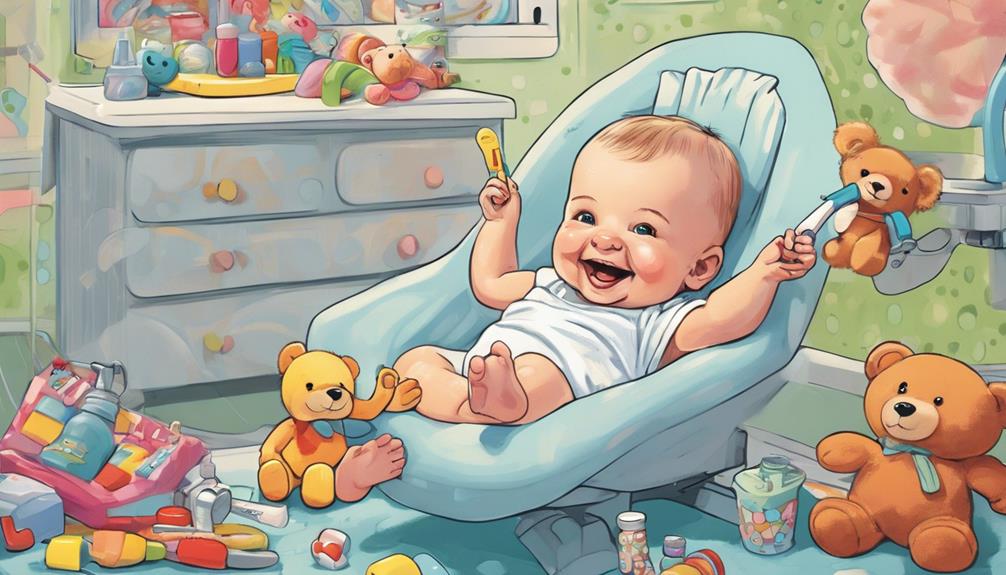
Starting dental care early lays the groundwork for your child's lifelong oral health. It's important to establish good hygiene practices as soon as those first teeth erupt.
Here are three key reasons why early dental care matters:
- Prevent Tooth Decay: Regular brushing with fluoride toothpaste can considerably reduce the risk of tooth decay, setting the stage for strong, healthy teeth.
- First Dental Visit: Schedule your child's first dental visit by age 1 or when the first tooth appears. This helps catch potential issues early and guarantees proper monitoring of dental health.
- Guidance from Pediatric Dentists: Pediatric dentists can provide tailored advice and strategies for maintaining your child's teeth, making sure you're equipped with the best practices for their unique needs.
Safe Teething Products
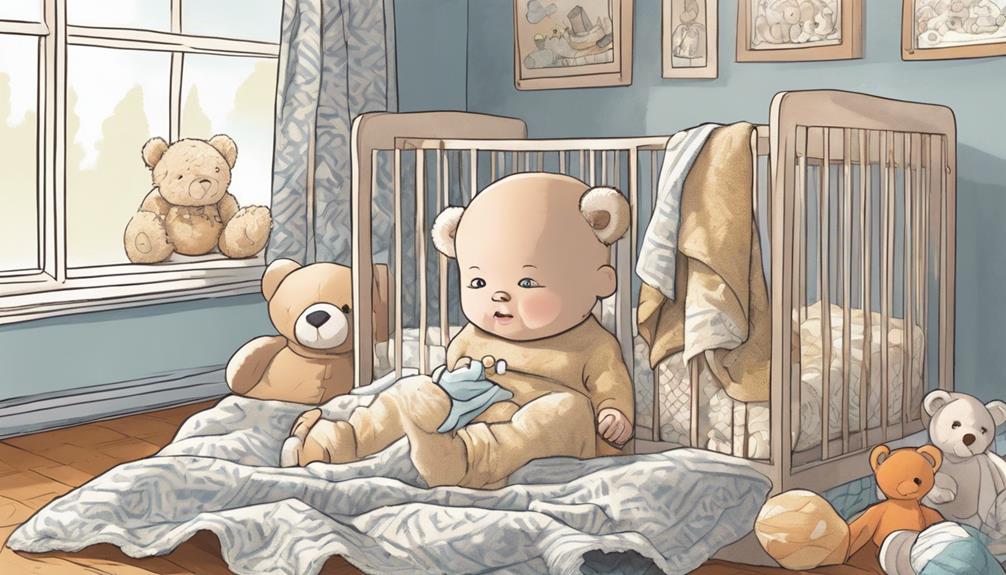
What safe teething products can help soothe your baby's sore gums while ensuring their safety? You'll find several effective options that provide teething relief without compromising on safety.
Solid rubber teethers are a great choice, offering a durable surface for your baby to chew on without the risk of breakage or choking. Chilled teething rings made from firm materials can also help ease sore gums, but steer clear of those filled with liquid to avoid leaks and potential hazards.
For an easy DIY solution, try using frozen washcloths. They're safe, simple, and the coolness can numb sore gums while being easy for your little one to grasp.
However, remember that supervision is key when your baby uses any teething products. Avoid items like teething necklaces, which can pose strangulation and choking risks, and don't rely on them for effectiveness since there's no scientific backing.
Fluoride and Dental Health

As your baby's teeth come in, understanding the role of fluoride in their dental health becomes increasingly essential for preventing decay and strengthening enamel.
Here are three key points to keep in mind:
- Fluoride's Benefits: Fluoride helps form a harder, more resistant tooth enamel, which is critical for preventing cavities and tooth decay.
- Sources of Fluoride: Most tap water in the U.S. contains added fluoride, making it a safe option for your infant, while bottled water often lacks sufficient fluoride.
- Pediatric Recommendations: Pediatricians recommend applying fluoride varnish once your baby's first teeth emerge, as this can greatly reduce the risk of cavities.
Incorporating fluoride into your child's dental care routine is essential.
For infants, use a smear of fluoride toothpaste, while kids over three should use a pea-sized amount. This helps maintain good oral hygiene without the risk of swallowing excess fluoride.
Early introduction of fluoride is fundamental; studies show that children who receive adequate fluoride are less likely to experience tooth decay.
Prioritize fluoride to guarantee your baby's smile stays healthy as they grow!
First Dental Appointment Guidelines
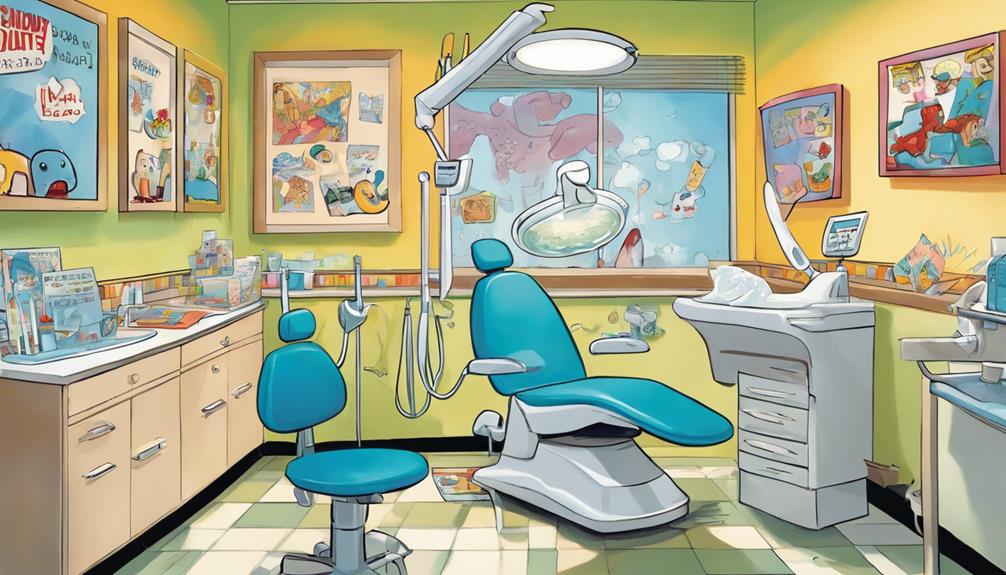
Scheduling your baby's first dental appointment after their first tooth appears is vital for guaranteeing a healthy smile. Ideally, this visit should occur by your child's first birthday. Pediatric dentists specialize in evaluating tooth development and can provide you with valuable guidance on proper oral hygiene for infants.
During the dental visit, the dentist will examine your child's mouth and teeth, checking for any concerns while educating you on maintaining your baby's oral health. Establishing a 'dental home' by age one is significant, as it guarantees continuous care and monitoring of your child's dental health.
Regular dental check-ups help prevent future issues, allowing your little one to grow up with a healthy smile. These appointments aren't just about treatment; they're about fostering a relationship with a dental professional who understands your child's unique needs.
Common Misconceptions About Teething

Teething can spark a lot of myths among parents, leading to confusion about what to expect during this natural process. Here are three common misconceptions you should be aware of:
- Teething causes diarrhea: There's no scientific evidence linking teething to diarrhea. If your baby is experiencing unusual symptoms, it's advisable to seek medical advice.
- High fever during teething: Many believe that a tooth erupts with a high fever, but mild temperature increases are normal. A true fever over 100.4°F (38°C) usually indicates an illness.
- Teething necklaces provide relief: While some think these necklaces soothe discomfort, they pose significant choking and strangulation risks with no proven effectiveness.
As your baby is teething, you might notice some irritability and fussiness, which are typical responses. However, it's crucial to remember that some babies start teething without showing any signs of distress at all.
Understanding these common misconceptions can help you navigate this stage with confidence and guarantee your child's comfort during this important development.
Frequently Asked Questions
At What Age Do Babies Get What Teeth?
You'll notice your baby's teeth typically start coming in between 6 to 12 months. The order and timing can vary, but expect a full set of 20 primary teeth by age 3. Teething in babies can be a challenging time for both parents and the baby. You may notice your little one becoming fussy or irritable as their teeth start to emerge. Offering teething toys or a cool washcloth to gnaw on can provide relief for sore gums. The teething process in babies can also cause increased drooling and a tendency to chew on objects. It’s important to keep an eye on your baby during this time to ensure they aren’t putting anything harmful in their mouth. Some babies may also experience mild fever or diarrhea during teething, but these symptoms should not be directly attributed to the teething process without consulting a pediatrician. Overall, patience and soothing techniques can help both you and your baby get through the teething process.
In What Order Should Baby Teeth Come Out?
Imagine your little one's mouth turning into a treasure chest! Baby teeth usually come out in the same order they appeared: first molars, canines, and finally, the second molars, typically by ages 6 to 12.
What Teeth Do 1 Year Olds Get?
At one year old, your child typically has 4 to 8 primary teeth, mostly lower and upper central incisors. Each child's teething timeline varies, so don't worry if it's slightly different.
How Many Teeth Should a 9 Month Old Have?
By 9 months, your baby typically has about 2 to 4 teeth. The lower central incisors usually erupt first, followed by the upper ones. However, every baby's teething timeline can vary considerably.
Conclusion
As you journey through the woodland of parenthood, remember that teething is just a small chapter in your child's adventure.
Each tooth that emerges is like a star lighting up the night sky, marking milestones in their growth.
Embrace the bumps and discomforts along the way, knowing they pave the path to a bright smile.
By providing care and support, you're planting seeds for a lifetime of healthy dental habits, ensuring your little explorer shines brightly for years to come.
